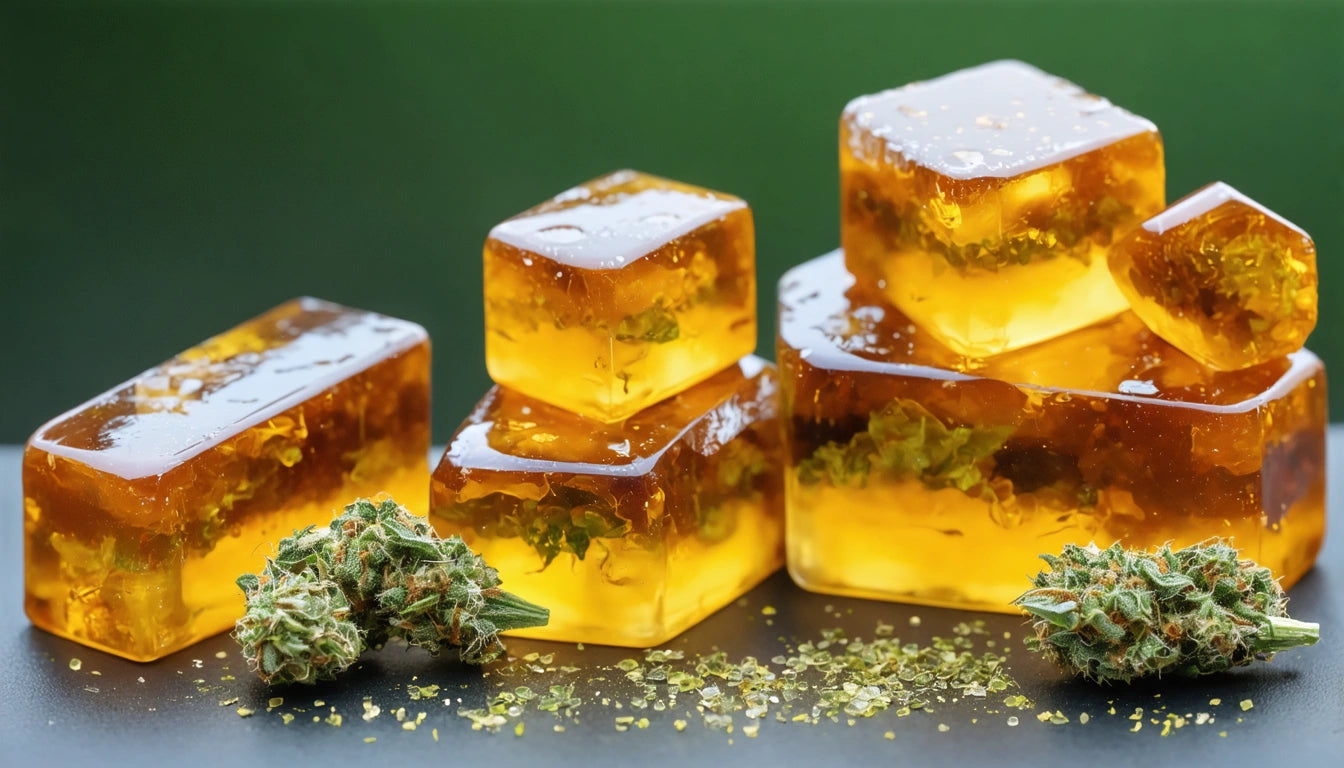Table of Contents
Cannabis concentrates represent the pinnacle of potency in the marijuana product spectrum. These extracts contain significantly higher levels of cannabinoids and terpenes than flower, offering intense effects and flavor profiles. As the market evolves, understanding the differences between concentrate types, production methods, and consumption techniques becomes essential for both consumers and industry professionals.
Understanding Cannabis Concentrates
Cannabis concentrates are products created by extracting desirable compounds from the cannabis plant, primarily cannabinoids like THC and CBD, along with terpenes responsible for flavor and aroma. The extraction process removes plant material and isolates these compounds, resulting in products with potency levels that can reach 80-90% THC, compared to flower's typical 15-25%.
The concentrated nature of these products requires proper packaging solutions to maintain freshness and potency. Many producers opt for specialized concentrate containers designed to preserve terpene profiles and prevent degradation from light, heat, and air exposure.
Popular Concentrate Types
Shatter
Shatter gets its name from its glass-like appearance and tendency to break or "shatter" when handled. This translucent concentrate typically has a hard, brittle consistency and is known for its high potency and purity. The amber-colored extract maintains its solid state through careful temperature control during production.
Wax and Budder
Wax concentrates have an opaque appearance and softer, malleable texture. Budder, a subcategory of wax, has a creamy, butter-like consistency created through specific agitation during the extraction process. Both are prized for their versatility and ease of handling for dabbing.
Live Resin
Live resin is produced from flash-frozen cannabis plants rather than dried and cured material. This preservation method retains significantly more terpenes, resulting in a more flavorful and aromatic product. Comparing live resin to other concentrates reveals its distinctive terpene profile and production process.
Rosin
Rosin is unique among concentrates as it's produced without solvents. Instead, it relies on heat and pressure to squeeze resinous sap from cannabis flower or hash. This solventless extraction method appeals to consumers seeking products free from potential chemical residues.
Extraction Methods
The production method significantly impacts a concentrate's consistency, potency, and flavor profile. Two primary categories exist: solvent-based and solventless extractions.
Solvent-Based Extraction
Solvent-based methods use chemicals to dissolve and extract cannabinoids and terpenes from plant material. Common solvents include:
- Butane Hash Oil (BHO): Used to create shatter, wax, and budder
- COâ‚‚: Produces oil commonly used in vape cartridges
- Ethanol: Often employed for full-spectrum extracts
Each method has distinct advantages and safety considerations, as detailed in this guide to solvent extraction methods.
Solventless Extraction
Solventless concentrates are produced without chemical solvents, instead using mechanical or physical means to separate trichomes from plant material:
- Rosin: Uses heat and pressure
- Dry sift/kief: Mechanical separation of trichomes
- Ice water hash: Uses cold water and agitation
Understanding the difference between solvent and solventless concentrates helps consumers make informed choices based on their preferences for production methods and final product characteristics.
Consumption Methods
Cannabis concentrates can be consumed in various ways, each offering different experiences and requiring specific tools.
Dabbing
Dabbing involves flash-vaporizing concentrate on a heated surface (usually a nail or banger) and inhaling the resulting vapor. This method requires specialized equipment including a dab rig, torch or e-nail, and dabbing tools. For beginners, learning how to dab properly is essential for safety and optimal experience.
Vaporization
Portable vaporizers and vape pens offer a more convenient option for concentrate consumption. These devices heat concentrates to temperatures that vaporize cannabinoids without combustion. The best devices for dabbing or vaping concentrates vary based on user preferences for portability, temperature control, and vapor quality.
Infusion
Concentrates can also be incorporated into edibles or added to flower to increase potency. Learning how to use concentrates in edibles or vape pens opens up additional consumption options beyond traditional dabbing.
Potency and Labeling
Understanding concentrate labels is crucial for proper dosing and selecting products that meet specific needs. Labels typically include:
- THC and CBD percentages
- Terpene profiles
- Extraction method
- Production date
- Batch testing information
For new users, learning how to read concentrate labels and potency info helps prevent overconsumption and ensures a positive experience.
Storage and Preservation
Proper storage is essential for maintaining concentrate quality. Exposure to heat, light, air, and humidity can degrade cannabinoids and terpenes, diminishing potency and flavor. Following storage tips to preserve flavor and potency helps extend the shelf life of these premium products.
Key storage recommendations include:
- Store in airtight, opaque containers
- Keep in cool, dark environments
- Use silicone or glass containers designed for concentrates
- Consider refrigeration for long-term storage
Medical Applications
Cannabis concentrates offer medical patients precise dosing and rapid relief. Their high potency makes them suitable for treating severe symptoms when lower-potency products prove insufficient. This guide for medical patients outlines important considerations when using concentrates therapeutically.
Medical applications include:
- Chronic pain management
- Appetite stimulation
- Nausea relief
- Sleep disorders
- Inflammatory conditions
Industry Evolution and Consumer Education
As the concentrate market expands, both benefits and concerns emerge. The high potency of these products offers therapeutic advantages but also raises questions about tolerance development and potential misuse. Understanding the risks and benefits of high-THC concentrates is essential for responsible consumption.
The future of cannabis concentrates lies in continued refinement of extraction techniques, expanded medical applications, and increased consumer education. As regulatory frameworks evolve, expect to see more standardized testing requirements, clearer labeling standards, and innovative delivery systems designed to enhance safety and user experience.











Leave a comment
All comments are moderated before being published.
This site is protected by hCaptcha and the hCaptcha Privacy Policy and Terms of Service apply.